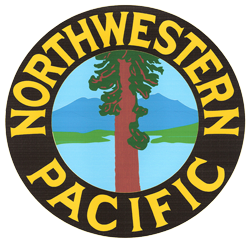December 2000 Update
The Preservation Steering Committee (PSC) had hoped work on Caboose 13 could start by the end of the year, but the availability of funds has held things up until early January.
Now that funds have become available, work parties have been scheduled for all Saturdays in January. The initial work is to remove the remains of the old roof covering (part had blown off during transport), identify and replace wood sheathing that contained rot, and put on the new roof covering.
The reason for the delay was based on the desire to have an assurance that once the roof came off the caboose, that we’d be able to expeditiously put a new one back on. Leaving the interior vulnerable to moisture was most undesirable.
Wanting to have the caboose secured from the elements at the earliest possible time, the Board was polled about moving unrestricted funds to the caboose rather than wait for additional donations. The Board did unanimously approve this plan, but it was too late to schedule a work session before Christmas.
The new roof covering is a unique process, in that we are using the same materials and techniques used for the original roof application in the 1920’s! This process involves placing a layer of Irish felt which is treated with Airbol. This is then covered with canvas which is stretched and tacked down with several thousand copper tacks. The canvas is then heavily painted. This is the same application used by the Millerick Brothers on P&SR #8. While considerably more work than roll roofing and tar, it is functionally better since it is more flexible, and is historically correct.
Much work is needed just to get the caboose closed in and secured from the elements. All window glass needs to be replaced, and both end doors require replacement. Builders Glass in Ukiah has offered to provide safety window glass at a reduced cost. But we could use help with the manufacture of the two doors. If anyone out there has the experience and equipment for this task, (or to help with any other aspect of the project) let us know through the Society mail, e-mail or phone.
Work has continued behind the scenes while funding was being arranged. Doug Richter did some research for the PSC and came up with a unique photo of #13 from the Richard Biermann collection. [At end of update] Photos of #13 are scarce. This is only the third photo of this particular caboose known to exist. The shot is from December 12, 1955, and puts the 13 at San Rafael. The photo also presents some questions, since the stencil lettering conflicts with Futura lettering also believed to have been used in the 1950’s, and a step board is clearly in place around the cupola which does not show in other photographs.
Member Jim Gray prepared a planned cost curve based upon our proposed budget, and is also working on a timeline schedule which will permit us to visualize what work should be going on at a certain time, and in what order. Both of these tools should help to keep us on budget and on schedule.
Jeff and Don Millerick placed some additional cribbing under the caboose, to help stabilize it as work began, since it sits pretty high off the ground and not on its trucks. Jeff has also donated an unmarked marker lamp (that sounds wrong, but that’s correct!) and an inspectors lamp.
Allen Tacy did the graphic layout design work for a new run of HO gauge model railroad flatcars of the 1940’s era, and forwarded that to Bill McClung in Colorado. Bill will be producing the flatcars, and donating them to the Society. We will them sell them to raise funds for restoration of the caboose.
Now that work has started, donations–both financial and of materials and services–are much needed to keep this work going. If you can help with financial or material donations–or want to work on the caboose–please e-mail the Preservation Committee.

